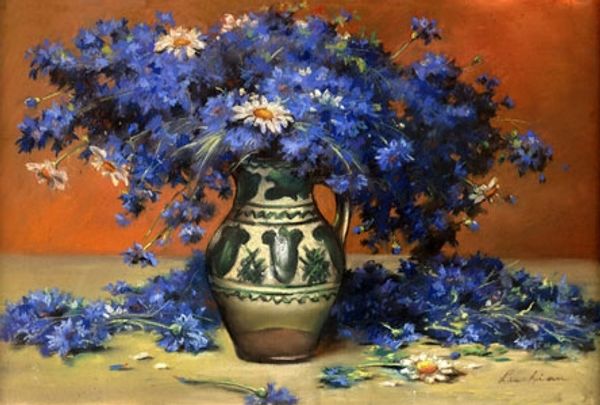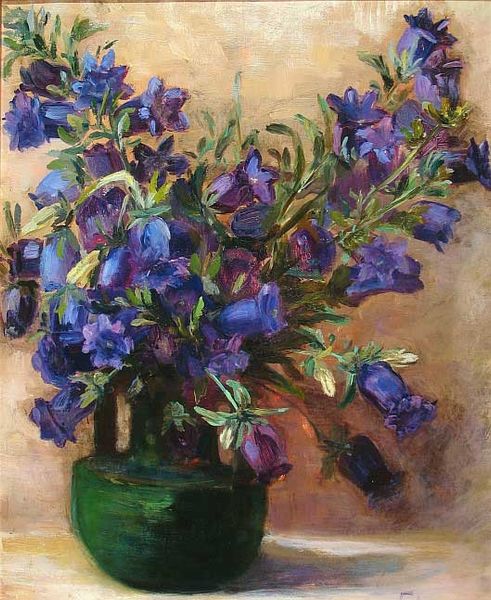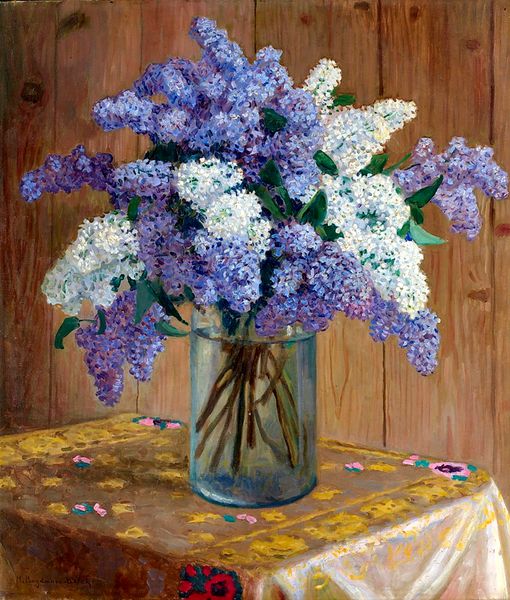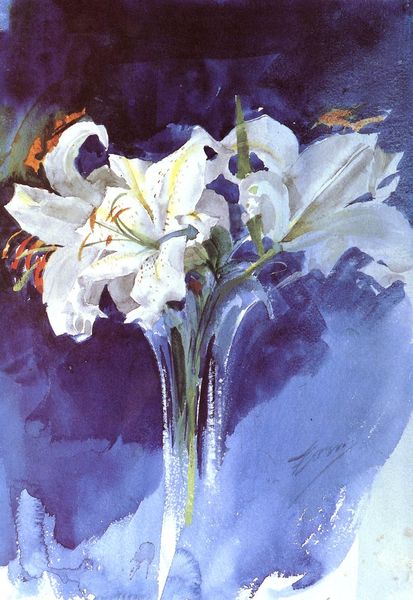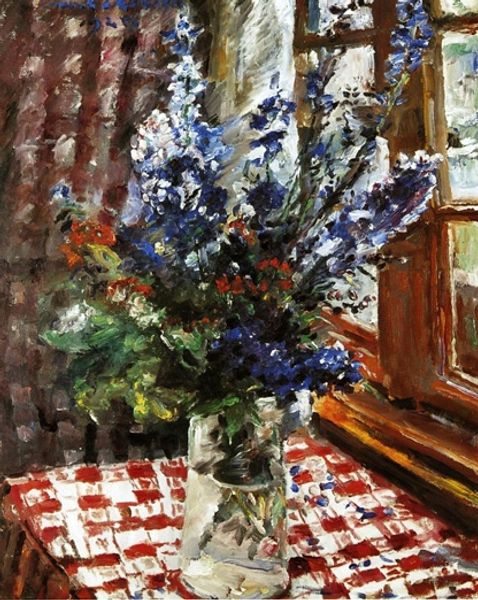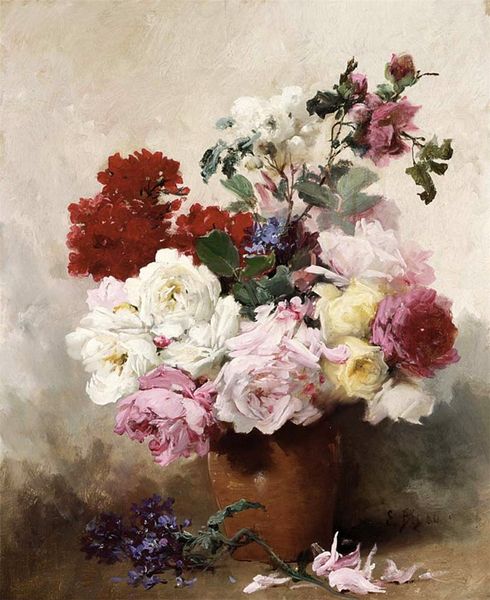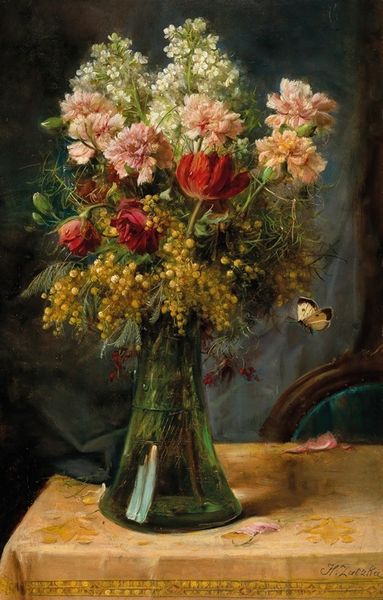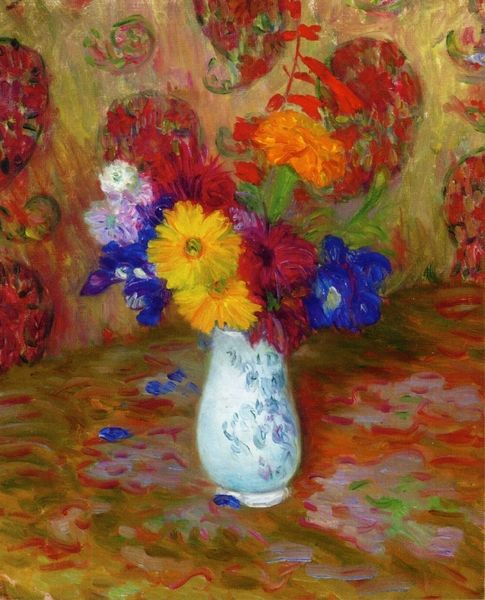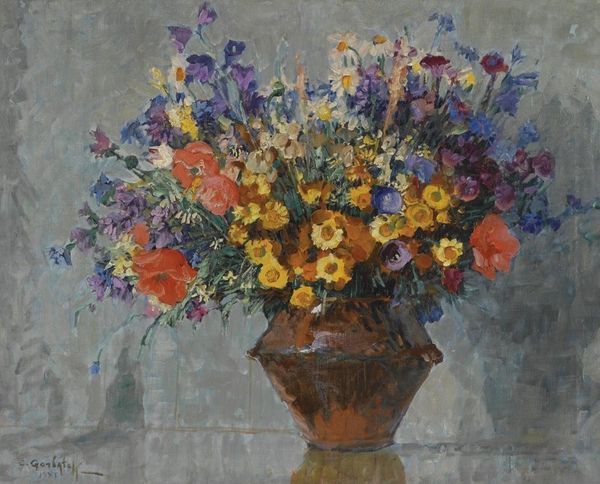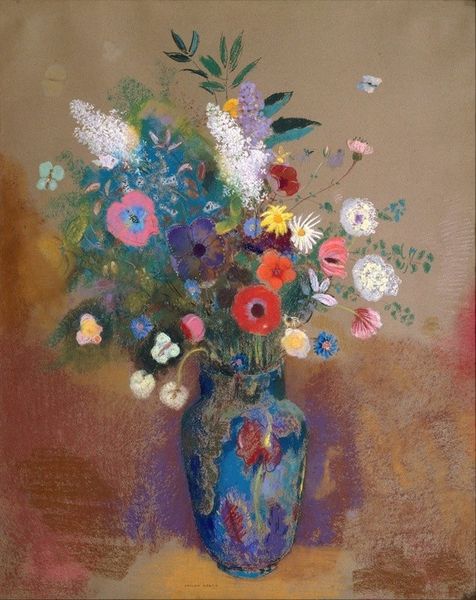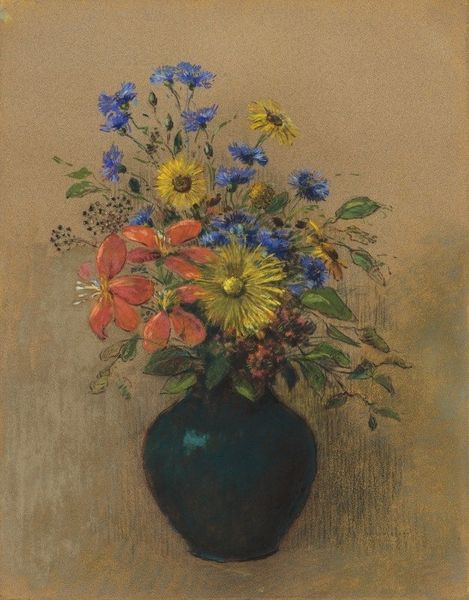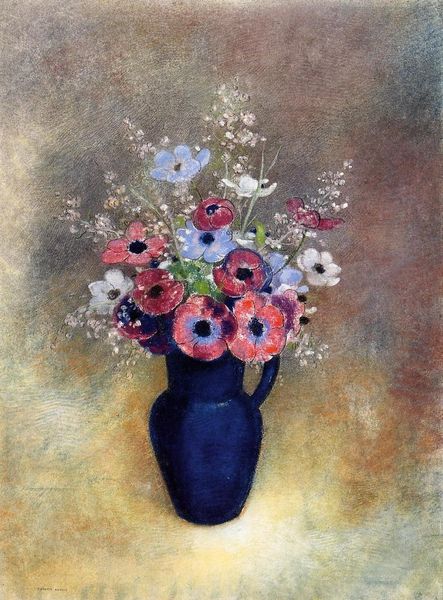
Copyright: Public domain
Curator: Here we have Isaac Levitan’s “Cornflowers,” painted in 1894, using oil paints, possibly with some pastel elements, in an Impressionist style. Editor: It strikes me as quite delicate, almost ephemeral. The abundance of blues are stunning, but there's a fleeting, dreamlike quality, especially in how the edges dissolve into the background. Curator: Yes, consider how Levitan masterfully uses color and light to construct form. The bouquet, a dense mass of azure, emerges from a shadowy space. Note how the strokes create texture. Do you see the tension between definition and dissolution? Editor: I am drawn to the crafting of the ceramic vase. It is like earthenware; simple in form and texture but glazed with reflective color and painted to appear more elegant. There is beauty here, though I'm thinking also about the origins, the production, who gathered and arranged these flowers, perhaps cultivated them... It evokes a sense of labor beyond pure artistic creation. Curator: While I agree the earthy vase adds to the scene, to me, the arrangement’s structural rhythm speaks volumes. See how your eyes dance from bloom to bloom, moving into depth through varied, though repeated forms. It’s this repetition of the core blossom motif that gives the whole scene its core aesthetic logic. Editor: Perhaps, but think of how many hands touched this subject! There is so much about bringing the cornflower itself to pigment—mining for colors. Even its eventual transport to the home. And even Levitan is bound to those limits—buying materials and tools that predate the painting. Curator: The composition, though, moves beyond any mere material constraint. The cornflowers themselves could function as emblems or metaphors of natural beauty and transience. Their color symbolism, potentially linked to themes of nostalgia or reverie. Editor: Sure, these are interesting symbols of memory—a field to color, perhaps for export? Overall, there is that push and pull with this artist and the work he makes and presents. How is this arrangement divorced from field and brought to canvas? Curator: A valid reading—yet ultimately the painting invites a meditation on how pure visual sensation itself carries profound emotive weight. Editor: So yes, the artist uses materials for the eye but does not deny that they came from labor. It shows the artist, like any craftsman or worker, dependent on time and materials. Curator: True. Both converge—an object's construction with beauty—through our focused analysis. Editor: Indeed. A bouquet, not simply seen, but deeply understood via every artistic contribution.
Comments
No comments
Be the first to comment and join the conversation on the ultimate creative platform.
